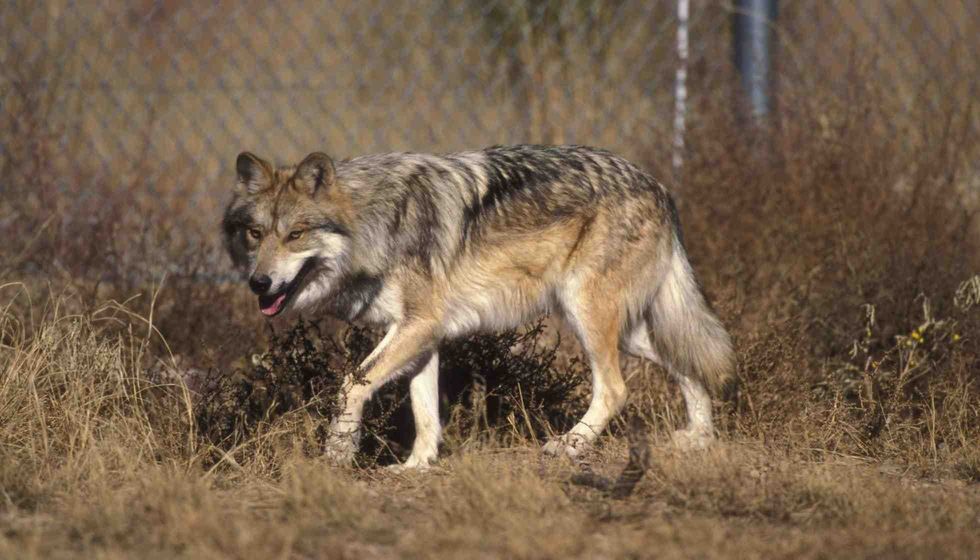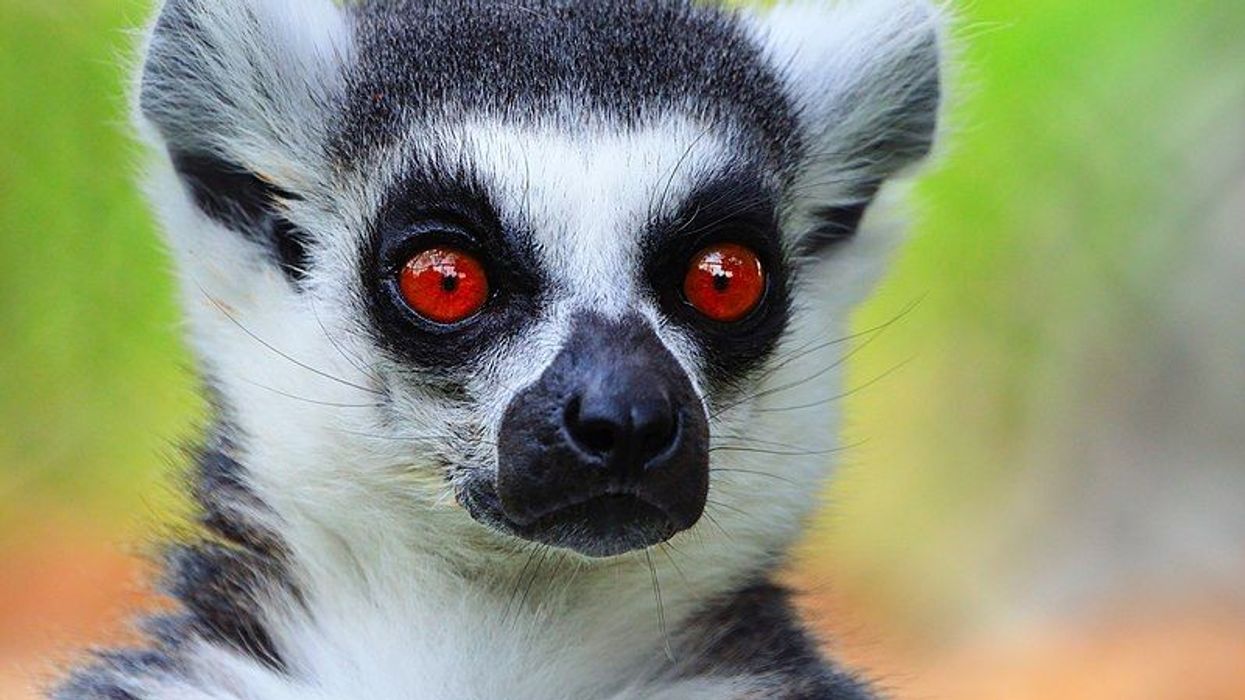The Mexican wolf is also known as the 'Lobo' or simply 'El Lobo' and it is one of the types of gray wolves found in the Southern part of Northern America. Their scientific name is Canis lupus baileyi.
Earlier, they could even be found in Texas but are now mostly found in Eastern Arizona, Southeastern Arizona, Southwestern Arizona and New Mexico, Southern New Mexico in the United States of America, and also in the northern parts of the country of Mexico such as Central Mexico, Western Mexico in North America.
This wolf is a subspecies of the gray wolf which is usually found in this region. Since the Mexican wolves are facing extinction and are listed as endangered, many US National parks and programs have started taking them captive to increase or make a recovery in their number.
The wolves are taken into captivity into a setting that looks similar to their natural territory, then wolf recovery efforts are made to make them breed and increase their number.
Once the task is complete, the individual wolves are reintroduced into the natural territory from captivity and back to their pack. If you want to learn more fascinating facts about this animal, read on.
If you like this article, be sure to check out these Ethiopian wolf facts and lab chow mix facts.
Mexican Wolf Interesting Facts
What type of animal is a Mexican wolf?
A Mexican wolf is a type of a wolf belonging to the Canis genus.
What class of animal does a Mexican wolf belong to?
The Mexican wolf belongs to the class of mammal.
How many Mexican wolves are there in the world?
As per studies as recent as 2017, there are 143 Mexican wolves found in the wild. There are also 240 Mexican wolves found in captive breeding programs across the United States of America.
Where does a Mexican wolf live?
The Mexican wolf lives in the wild living space in Arizona, Mexico and in the mountain forests where their population can roam free.
What is a Mexican wolf's habitat?
A Mexican wolf habitat in the North American and New Mexico regions is in the natural, wild territory of mountain woodlands and deserts as well. They are also found in tundra regions which can be quite cold.
Who do Mexican wolves live with?
Mexican wolves live in packs which have four to nine animals. Within the packs, there would be one offspring or child along with its parents.
How long does a Mexican wolf live?
The life span of a Mexican wolf is around six to eight years.
How do they reproduce?
The Mexican wolves continue their lineage or reproduce in the usual way most mammals do, by giving birth to babies or offspring. The female wolves breed around February and March with a short gestation period of approximately 63 days.
The Mexican wolf litter after the gestation period consists of four to seven babies. Only one female wolf in the pack gives birth and thus continues their lineage.
What is their conservation status?
The Mexican wolf pack is currently considered to be facing extinction in North American forests and grasslands regions as well as in Mexico. The number has dwindled and hence, efforts are being made to recover and restore their population back especially in Arizona.
Mexican Wolf Fun Facts
What do Mexican wolves look like?

Mexican wolves have small, narrow skulls along with comparatively dark fur pelt. They have a bushy tail and its fur coat is mostly rust-colored or brown with black, grey or white intermeshed within its fur.
How cute are they?
Mexican wolves can be cute but not in the usual sense. They are quite beautiful and majestic creatures and have a unique fur coat of rust colors mixed with grey and white.
How do they communicate?
Mexican wolves generally communicate with each through sound and their howl. They also use tactile senses or touch each other to communicate.
How big is a Mexican wolf?
A Mexican wolf can be as tall as 25-32 in and Mexican wolf size length usually vary between 60-72 in. An adult male sperm whale is almost 10 times larger than the size of a Mexican wolf.
How fast can a Mexican wolf run?
A Mexican wolf can run quite fast, at around 36-38 mph, as it has long legs and a sleek, slim body that helps it to attain a high speed.
How much does a Mexican wolf weigh?
The Mexican wolf is not very big and weighs around 60-90 lb.
What are their male and female names of the species?
Wolves do not have separate names for their males and females, so the male and female wolves are just denoted as male wolves and female wolves.
What would you call a baby Mexican Wolf?
Baby Mexican Wolves are called wolf pups or simply, pup.
What do they eat?
Mexican wolves are carnivorous and eat mostly small animals which it can catch as prey. Its diet consists of smaller animals like elk, deer, mule and rabbits.
Are they slobbery?
Mexican wolves are not very slobbery but like the rest of its subspecies, it is known to slobber as well.
Would they make a good pet?
The Mexican wolf would not make a good pet as these wolves are essentially wild animals who catch their own prey and like to roam around freely. They are smaller than the large grey wolves that they are related to, but the can also cause harm to humans so it is not easy to domesticate them into a pet.
Did you know...
In the Pre-Columbian era in Mexico, Mexican wolves were worshipped by the people! They were considered to be one of the symbols of the revered sun God on land and sometimes, these wolves were also sacrificed to Gods so that good fortune may befall on the city.
Like the rest of the subspecies of wolves, Mexican wolves also follow usual pack hierarchy which consists of a leader or the alpha in a natural setting. There is an alpha pair consisting of a male and female who are adults and are central to the pack.
Only these adults or the alpha pair are genetically allowed to breed and can have children. The rest of the pack then protects those children while wandering together in order to avoid being eliminated.
Characteristics and health issues
Mexican wolves can often be susceptible to the same diseases that affect domestic dogs, wild foxes and coyotes. The diseases may be different for those who are in captive breeding programs in the American recovery centers.
Both wolves in their pack, in the wild or in captivity, may be prone to Echinococcus granulosus, internal and external parasites, along with rabies. Although, scientists do make efforts to restore the number of this endangered wolf population in Southwestern and Western parts of USA, even in Texas, through captive breeding programs.
Why is the Mexican wolf endangered?
The Mexican wolf is almost extinct and is currently considered to be an endangered species as noted by the US Government under their Endangered Species Act. It is mostly human activities which threaten the survival of the Mexican grey wolf.
Poaching and hunting by humans and taking them captive from their pack threatens their population. At times, farmers and ranchers are also allowed to kill these animals if they see that the wolf is causing trouble.
At one point of time, the US government also killed many Mexican wolves on behalf of the livestock industry. These wild, endangered animals are also often taken captive from their pack from which recovery becomes difficult.
Here at Kidadl, we have carefully created lots of interesting family-friendly animal facts for everyone to discover! Learn more about some other mammals including red wolf, or Cheagle.
You can even occupy yourself at home by drawing one on our Mexican Wolf coloring pages.









